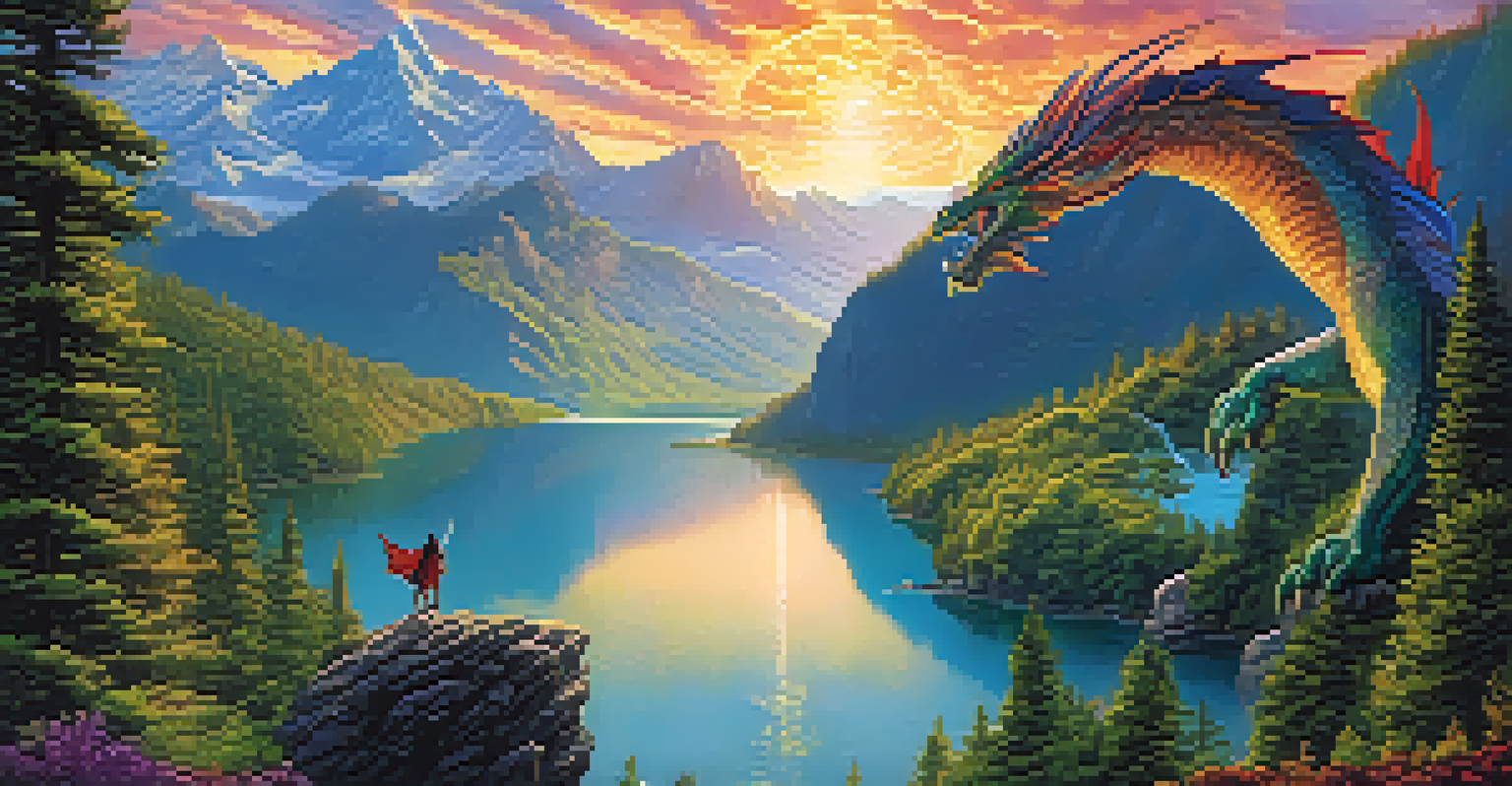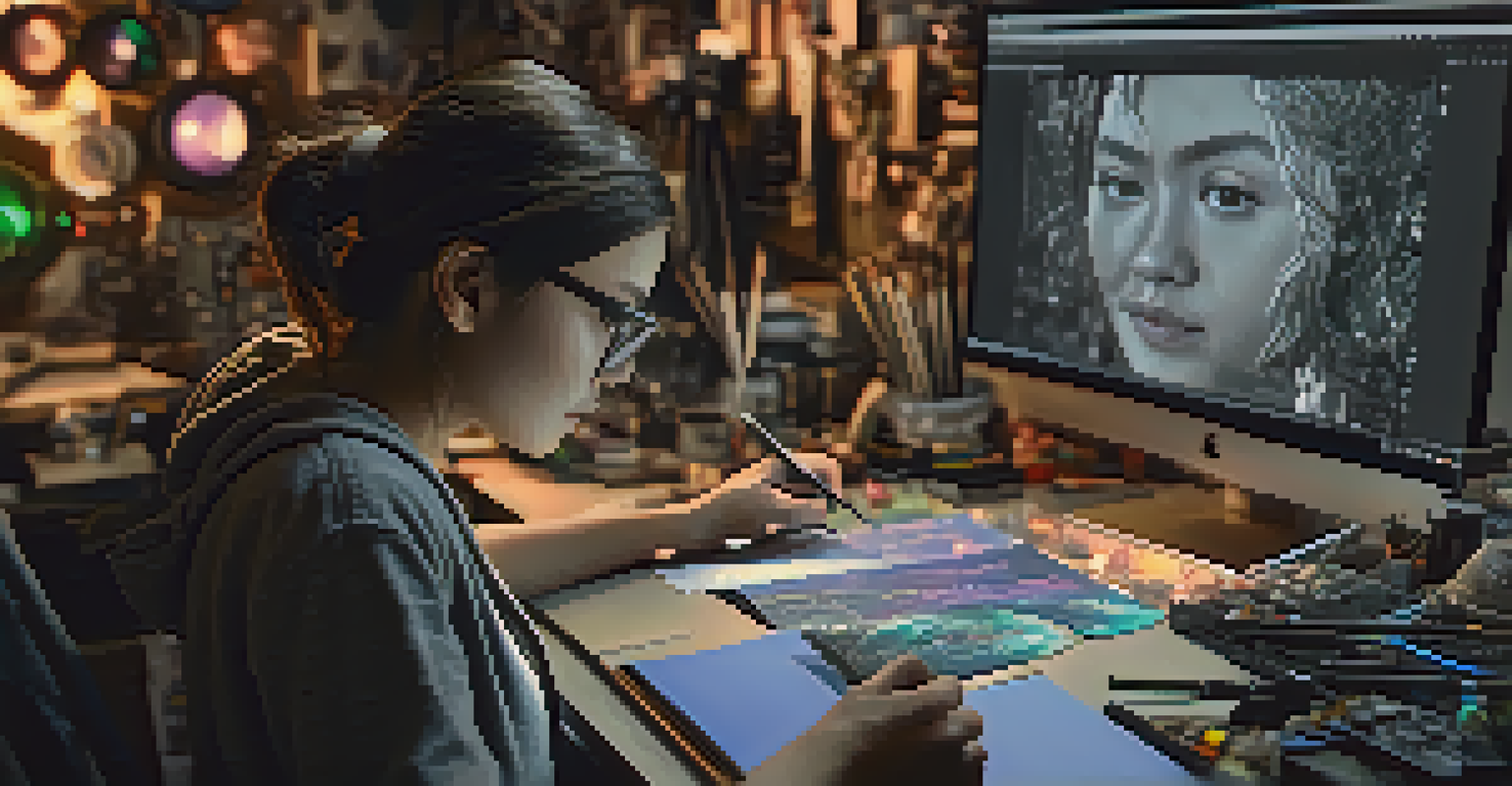Visual Effects Artists: Unsung Heroes of the Film Industry

Introduction: The Magic Behind the Scenes
When you watch a blockbuster movie filled with sweeping landscapes and fantastical creatures, it's easy to forget the talented individuals who made it all possible. Visual effects artists, often working behind the scenes, create the stunning visuals that captivate audiences worldwide. Their work is essential in transforming the director's vision into a breathtaking reality, making them the unsung heroes of the film industry.
The magic of cinema is in the way it can take us to places we’ve never been, and visual effects are the key that unlocks those doors.
These artists utilize a blend of creativity and technical skills, combining art with cutting-edge technology to design scenes that would be impossible to capture on camera. From the mesmerizing effects in superhero films to the intricate CGI in animated features, visual effects artists are the backbone of modern cinema. Their ability to conjure up worlds from mere concepts is nothing short of magical.
Yet, despite their pivotal role, these artists often remain in the shadows, with audiences unaware of the countless hours spent perfecting each frame. As we dive deeper into the world of visual effects, we’ll uncover the various facets of this fascinating profession and why these artists deserve our recognition.
The Evolution of Visual Effects in Film
Visual effects have come a long way since the early days of cinema. Initially, filmmakers relied on practical effects like miniatures and makeup to create illusions on screen. However, with the advent of digital technology, visual effects artists began to revolutionize the industry, allowing for unprecedented creativity and realism in films.

The transition from practical to digital effects has not only enhanced visual storytelling but also expanded the possibilities for filmmakers. Iconic movies like 'Jurassic Park' and 'The Matrix' showcased groundbreaking visual effects that set new standards for the industry. Today, almost every major film incorporates some form of visual effects, whether subtle or grandiose.
Visual Effects: Unsung Heroes
Visual effects artists play a crucial role in transforming a director's vision into stunning realities, often behind the scenes.
As technology continues to advance, the tools available to visual effects artists are becoming more sophisticated. This evolution means that artists can now create more complex and lifelike visuals, pushing the boundaries of what we believe is possible on screen.
The Diverse Roles Within Visual Effects Teams
Inside a visual effects team, various roles contribute to the creation of the final product. From 3D modelers and animators to compositors and texture artists, each professional brings a unique skill set to the table. This diversity allows for a collaborative environment where artistic vision and technical expertise blend seamlessly.
Visual effects are not just about creating a spectacle; they are about enhancing the story and making the impossible possible.
For instance, 3D modelers focus on creating the digital assets that populate the scenes, while animators breathe life into these models, giving them movement and personality. Compositors then merge these elements with live-action footage, ensuring a cohesive look. Each role is vital to the overall success of the project, and the synergy among team members is crucial.
Understanding these roles helps to appreciate the teamwork involved in visual effects production. It’s a collaborative dance of creativity and precision, where each artist plays their part to create a unified vision that dazzles viewers.
The Creative Process: From Concept to Screen
The journey of visual effects from a mere concept to the silver screen is a fascinating process. It begins with pre-production, where visual effects artists collaborate with directors and producers to understand the project's vision and requirements. This phase is crucial for planning how visual effects will enhance the storytelling.
Once the groundwork is laid, artists create storyboards and animatics to visualize key scenes. This step allows them to experiment with different ideas and refine their approach before diving into the intricacies of production. As filming commences, the team continues to work closely with the live-action footage, ensuring that the visual effects align seamlessly with the captured performances.
Evolution of Visual Effects
The shift from practical to digital effects has revolutionized storytelling in film, allowing for unprecedented creativity and realism.
Finally, in post-production, artists polish their work, adding details and final touches that bring the scenes to life. This meticulous process is what ultimately transforms raw footage into the breathtaking visuals that audiences adore, emphasizing the artistry and effort behind each frame.
Challenges Faced by Visual Effects Artists
Despite the thrill of creating stunning visuals, visual effects artists face numerous challenges in their work. One of the most significant hurdles is time constraints; projects often have tight deadlines, forcing artists to balance quality with efficiency. This pressure can lead to long hours and intense workloads, yet the passion for their craft often drives them to deliver their best.
Another challenge is keeping up with rapidly evolving technology. As new software and tools are developed, artists must continuously adapt and learn to stay competitive in the field. This commitment to learning is essential, but it can be daunting for many.
Furthermore, visual effects artists often encounter creative differences with directors or producers. Navigating these differences while maintaining a collaborative spirit is crucial for achieving the project's vision. Despite these challenges, their dedication to their art shines through, proving that passion often triumphs over adversity.
The Impact of Visual Effects on Storytelling
Visual effects have a profound impact on storytelling, enhancing narratives by creating immersive worlds and experiences. They allow filmmakers to push the boundaries of imagination, bringing stories to life in ways that were previously unimaginable. Whether it’s a fantastical universe or a hyper-realistic action sequence, visual effects can elevate a film's emotional resonance.
Consider films like 'Avatar' or 'Inception,' where visual effects play a crucial role in shaping the story. These films utilize stunning visuals to draw audiences into their worlds, making the experience more engaging. The right effects can not only capture attention but also deepen the viewer's connection to the characters and plot.
Future of Visual Effects
Advancements in technology, such as VR, AR, and AI, promise to enhance visual effects, pushing the boundaries of cinematic experiences.
Ultimately, visual effects serve as a powerful storytelling tool, allowing filmmakers to convey complex ideas and emotions. By creating visually arresting sequences, artists enhance the overall cinematic experience, captivating audiences and leaving a lasting impression.
The Future of Visual Effects in the Film Industry
As technology continues to advance, the future of visual effects promises to be even more exciting and innovative. Emerging technologies like virtual reality (VR) and augmented reality (AR) are beginning to reshape how visual effects are created and experienced. These advancements will likely blur the lines between reality and digital creation, offering audiences unprecedented levels of immersion.
Additionally, artificial intelligence (AI) is starting to play a role in streamlining the visual effects process, enabling artists to focus more on creativity rather than repetitive tasks. This shift could lead to quicker turnaround times and more intricate visuals, further enhancing the storytelling potential of films.

As we look ahead, it's clear that visual effects artists will continue to be at the forefront of cinematic innovation. Their ability to adapt and embrace new technologies will ensure that they remain essential contributors to the art of filmmaking, continuing to amaze and inspire audiences for generations to come.